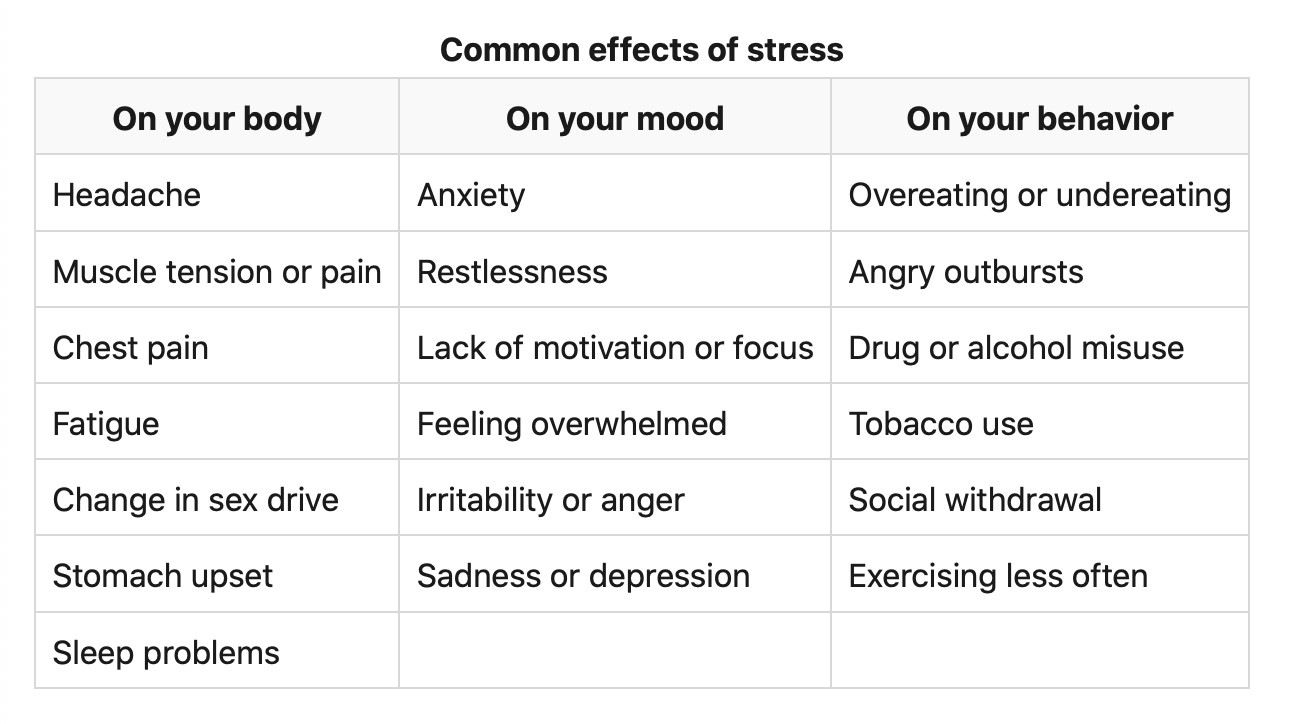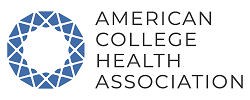Student Wellness
We strive to positively impact the personal well-being and academic success of MSU Billings students. We enhance the campus environment by utilizing research-based strategies, peer education, and collaborations with faculty, staff, students, and local community.
Select a topic below to learn more.
Recommended minutes of exercise for college age students
- 150 minutes or more of moderate-intensity aerobic activity, or 75 minutes of vigorous-intensity aerobic activity, or a combination/week
- 2 or more days/week of strength training that involves all major muscle groups
According to the 2021 National College Health Assessment Survey, 67% of MSUB students met the recommendation for aerobic activity only. 45% of MSUB students met the recommendation for both aerobic activity and strength training.
Recommended nutrition points for college age students
According to the 2021 National College Health Assessment Survey, 25% of MSUB students reported eating 3 or more servings of fruit per day (on average, in the last 7 days).
37% of MSUB students reported eating 3 or more servings of vegetables per day (on average, in the last 7 days).
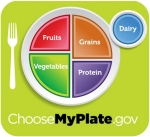
How to eat healthy on a budget
- Plan your meals
- Stick to your grocery list
- Cook at home
- Cook large portions and use your leftovers
- Don’t shop when you’re hungry
- Buy whole foods
- Buy generic brands
- Avoid buying highly processed food
- Stock up on sales
- Buy cheaper cuts of meat
- Replace meat with other proteins, such as legumes, eggs, or canned fish.
- Shop for produce that’s in season
- Buy frozen fruits and vegetables. Its more nutritious and cheaper!
- Buy in bulk
Need a place to exercise? Try these.
On campus and FREE for students:
- MSUB Recreational Activities Center
- Intermural sports
- MSUB mile
In the community and inexpensive:
- Hiking and walking trails: Swords Park, Four Dances Trailhead, Zimmerman Park, and more!
- Billings YMCA
- Planet Fitness
According to the 2021 National College Health Assessment Survey, 84% of MSUB students reported consuming 4 or less drinks the last time they drank in a social setting.
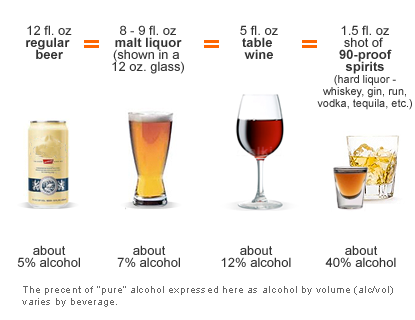
What is a standard drink?
Liquor. 1 shot = 1.5 oz
Wine. 1 glass = 5 oz
Beer. 1 serving = 12 oz
- Each standard drink raises your BAC percentage differently because each has a different percentage of alcohol content.
- Drinking at a house party is different than at the bar. At the bar, the drinks are fairly accurate to the serving sizes above. If a friend is pouring you a drink or you are pouring it for yourself, you probably will not/do not measure the serving size. Which is okay! Just make sure you are aware of how much is in your drink for your own safety.
- This can be done by only pouring your own drinks or watching your friends pour your drinks.
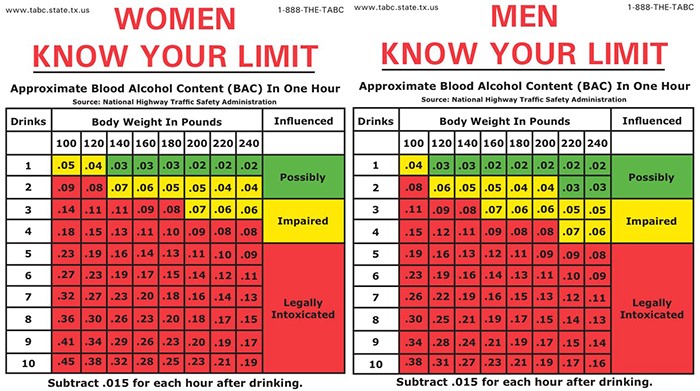
What is a BAC card?
- BAC stands for Blood Alcohol Content
- When you blow into a breathalyzer, it reads your BAC.
- The legal limit in Montana is 0.08.
How to read a BAC card:
- Start with your biological gender. Alcohol affects gender differently. People born as female will get drunk faster than those who are male.
- Next, find your body weight. This also impacts your BAC. The lighter a person weights, the faster their BAC level will increase as they drink.
- Lastly, find the amount of standard drinks you have had. If you have had 2 shots and 1 bottle of beer, that is equal to 3 standard drinks.
- Using your biological gender, weight, and number of standard drinks, you will find your approximate BAC.
Party smart tips
- Always have a ride plan before going out whether its having a designated driver, calling a Lyft or Uber, or staying at a near by hotel.
- Do not accept drinks from a stranger. If someone offers, walk up to the bar to watch it being made and have it served directly to you.
- Never leave home without a fully charged phone/charger! You never know if you’ll need to call someone for help or a ride.
- Pace your drinking. Alcohol can take up to 2 hours to reach its full effect.
- Drinking non-alcoholic beverages between your alcoholic beverages will help you stay hydrated and stick to a limit!
- Eating foods high in protein before and during your night out, will help slow the absorption rate of alcohol.
- Always know your limits. Don’t let peer pressure get in the way of your better judgement.
Signs of Alcohol Poisoning
- Breathing is slowed, weakened, or may stop
- Skin color becomes blue, especially in the lips and fingernails
- Skin is cold and clammy to the touch
- Seizures
- Irregular heartbeat
- Difficult to wake up (unconscious/passed out)
- Vomiting does not cause the person to wake up
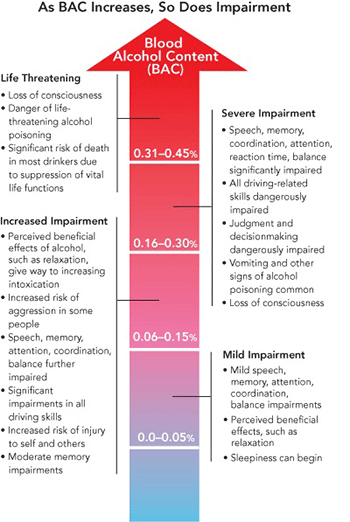
What to do if someone has had too much to drink
- Call 911 and stay with them until help arrives
- DON’T leave them alone
- DON’T give them any medication, food or liquid
- Keep them comfortable and position them on their side (the recovery position)
- Check their breathing and skin color
- Try to wake them
Do not be afraid to call for help! You can never know if someone has mixed drugs with alcohol, has a prescription that reacts poorly when mixed with alcohol, or has been drugged. You will never regret the decision to take action and save a life!
How to Help Yourself or a Friend
Are you concerned about a friend’s drinking? If so, you may be wondering how you can help. In order to help, you need to recognize the signs of alcohol abuse.
Common signs and symptoms of alcohol abuse:
- Drinking to get drunk
- Blackouts
- Violent behavior
- Missing class, not studying, and neglecting other responsibilities
- Avoiding friends or peer groups
- Starting to use additional drugs
- Sudden mood or personality changes
- Family history of alcohol or other drug abuse
According to the 2021 National College Health Assessment Survey, 21% of MSUB students reported using cannabis recreationally within the last 3 months.
Potency
THC is the active drug in cannabis plants that make you high. Potency refers to the percent of THC found in all cannabis products such as flower/bud, edibles, and concentrates. Cannabis available in the 1960s was 3% potency. The current average is estimated to be 20% potency. Cannabis products available at dispensaries range from 25% to 90%t potency.
Cannabis Concentrates
“Concentrates” is an umbrella term that refers to a variety of different cannabis extracts and their monikers available at dispensaries such as shatter, rosin, BHO, CO2, wax, crumble, honey oil, dabs, hash, tinctures, and capsules.
The most important distinction to make between cannabis flowers and concentrates is potency. A concentrate typically falls between 50-80% though some exceptional extracts can even push past 90%.
If you are going to smoke, keep these harm-reduction tips in mind.
- Don’t hold the inhale. Inhaling deeply and holding it in exposes your lungs to more tar per breath.
- Use rolling papers approved by the Food and Drug Administration (FDA). Rolling papers may seem like no big deal, but some contain chemicals and flavorings that can be toxic.
- Stick to glass bongs and pipes. Plastic bongs can contain chemicals like BPA and phthalates, which have been linked to serious health effects, including cancer.
- Keep your stuff clean. Keep your bongs and pipes clean, and don’t roll your weed on dirty surfaces.
- Don’t share mouthpieces or pass joints. Sharing your stash is fine, but not your pipes, bongs, or joints. When you share these, you’re basically swapping spit with that person and putting yourself at risk for infections.
Impairment
- The effects of cannabis peak just minutes after inhaling smoke or vapor.
- Wait at least six hours after smoking less than 35 mg THC before driving or biking. If you have smoked more than 35 mg, wait longer.
- The effects can peak up to four hours after eating or drinking cannabis and can last up to 10 hours.
- Wait at least eight hours after eating or drinking less than 18 mg of THC before driving, biking or performing other safety-sensitive activities. If you have consumed more than 18 mg of THC, wait longer.
- Do not drive when impaired!
- Being high or buzzed while doing some activities is not safe. For occasional users, smoking, eating or drinking even one serving (10 mg) of cannabis is likely to cause impairment. This affects your ability to drive, bike or perform other safety-sensitive activities.
Safety Tips
- Be cognizant of your setting. Make sure you are somewhere safe and with people you trust.
- Understand how cannabis affects you and understand your limits. If it makes you tired or distracted, don't use it if you need to be alert and focused.
- Don't drive or operate vehicles while impaired.
- Do not smoke in designated non-smoking areas.
- Be aware that cannabis can have a synergistic effect with other drugs, so take care and be informed about possible contraindication if you are taking other any other drugs.
- Getting help after using too much.
- Eating, smoking, or drinking too much cannabis can make people very sick.
- They may have problems walking or sitting up, have a hard time breathing, or start to feel sleepy.
- Adults may become very paranoid and seem to lose touch with reality.
- If a reaction seems bad, call 911 or go to an emergency room right away.
- Calling for help in case of any drug or alcohol emergency can save lives.
- Stay with the person having the reaction and cooperate with police and emergency medical responders.
If you’re worried about someone, call the poison control hotline at 1-800-222-1222 as soon as possible. Calling is free and you’ll be helped quickly.
MSUB Drug Policy
MSUB policy prohibits students, employees, and visitors from possessing, using, and/or distributing cannabis in any form on any of the university’s campuses or facilities, including in the residence halls, and during any university activities, either on or off campus.
More information:
Tobacco is the leading preventable cause of premature death in the United States and kills more than 400,000 Americans every year. This is more than deaths caused from alcohol, AIDS, car crashes, illegal drugs, murders, and suicides combined!
According to the 2021 National College Health Assessment Survey,24% of MSUB students reported using tobacco or nicotine delivery products in the last 3 months.44% of MSUB students reported using at least once in their life.
What’s in traditional cigarettes?
Every puff of cigarette has more than 4,000 different chemicals including:
- Ammonia – a poisonous gas and a powerful toilet cleaner
- Cyanide – a deadly ingredient in rat poison
- Acetone – a poisonous solvent, paint stripper, and nail polish remover
- Formaldehyde – used to preserve dead bodies
- Polonium-210 – a highly radioactive element
- Carbon Monoxide - a poisonous gas
*More than 40 of the 4,000 chemicals found in tobacco are considered to be capable of causing cancer.
What are the effects from smoking cigarettes?
Short Term Effects
- Bad Breath
- Smelly Hair & Clothes
- Decreased Sensation in Taste Buds
Long Term Effects
- Cancer
- Known to cause lung, larynx, oral cavity, and esophagus cancers.
- Contributes to kidney, pancreatic, stomach, cervical, uterine, and some leukemia’s.
- Heart Disease
- Stroke
- Bronchitis
- Respiratory Disease
What's in electronic cigarettes/vape products?
There are cancer causing chemicals in e-cigarette vapor including:
- Volatile organic compounds
- Ultrafine particles
- Nicotine
- Heavy metals such as nickel, tin, and lead
- Flavoring such as diacetyl, a chemical linkde to a serious lung disease
Nicotine Facts
- It is as addictive as heroin and cocaine.
- Nicotine can harm the developing adolescent brain, which keeps developing unil age 25.
- Using nicotine in adolescence can harm parts of the brain that control attention, learning, mood, and impulse control.
- According to the manufacturer, a single JUUL pod contains as much nicotine as a pack of 20 traditional cigarettes.
Tobacco 21 Federal Law
What is it?
- As of December 20, 2019, people under the age of 21 in the United States are no longer able to purchase tobacco products.
Why?
- Tobacco 21 could save 223,000 deaths among young people. 80% of tobacco users try their first product before the age of 21.
MSU Billings Tobacco Policy
MSU Billings is a tobacco free campus which mean that all uses of tobacco products are prohibited including cigarettes, smokeless tobacco, e-cigarettes, etc. The designated smoking areas around campus are the only places were the use of tobacco products are allowed. To learn more, visit the Tobacco-Free Poilcy Information webpage.
How to Quit
- Have a plan.
- Cold turkey. Most people try to quit cold turkey with no outside help or support (no aids, therapy, or medicine). It has been proven as not the most successful way of quitting with only 5% to 7% being able to quit on their own.
- Behavioral therapy involves working with a counselor to find ways not to use tobacco products. Discovering your triggers can help you better understand how to overcome cravings.
- Nicotine replacement therapy can come in many forms such as nicotine gum, patches, sprays, and inhalers. They contain nicotine without the use of tobacco. However, this method cannot be used on its own. It is the most successful with behavioral therapy and the support of family and friends. The goal is to end the addiction to nicotine, not to quit using tobacco.
- Prescription medicines such as bupropion and varenicline (Chantix) can help with cravings and withdrawal symptoms.
- A combination of different methods is more likely to help you quit for good. Find what works best for you and stick to it. For example, using both a nicotine patch and gum may be better than a patch alone. Another example would be using nicotine replacement therapy as well as behavioral therapy.
Resources
MSU Billings Student Health Services: 406-657-2153
Montana Tobacco Quit Line: 1-800-784-8669
- A FREE personalized quit plan.
- 5 FREE pro-active cessation coaching sessions.
- 8 weeks of FREE nicotine replacement therapy (gum, patches or lozenges) available for callers engaged in the program.
- Reduced cost cessation medication.
- Staffed 7 days a week: 5:00 AM to 11 PM, MST with 24 hour voicemail. Please leave us a message and we will call you back!
American Indian Commercial Tobacco Quit Line
- FREE culturally sensitive coaching with American Indian coaches
- 10 FREE coaching sessions
- Staffed Monday-Friday 6:00am to 7:30pm, MST. Due to high-demand, callers may need to leave a message and call-back number. They may also call 1-800-Quit-Now and ask for the American Indian Commercial Tobacco Program to set up a call-back from a Native American coach. Coaches will return a call within 24 hours.
Quit Help for Pregnant Women and New Moms
- FREE personal female coach
- FREE NRT during pregnancy and additional weeks postpartum
- 9 coaching calls during pregnancy and after delivery with cash incentives
Become An Ex: Free cessation program
- Rated one of the best free cessation programs.
- A customized quit plan that learns and grows with you.
- Text messages for support quitting smoking or vaping.
- Smart, interactive guide and tools for you to navigate your tobacco-free journey.
- Expert advice and tips for Mayo Clinic.
- An active, supportive EX Community of real tobacco users who have been through it all.
Free vaping cessation text messages for teens and young adults by the Truth Initiative
- Confidential, available 24/7
- Easy to enroll - text TAKEDOWN to 887-09
Types of Drugs
Depressants – Causes reduced anxiety, lowered inhibitions, slowed pulse and breathing, fatigue, memory loss, and impaired coordination.
- Alcohol, Barbiturates, GHB, Methaqualone, Valium, Xanax
Hallucinogens – Causes altered states of perception, thought and feeling, decreased ability to move, memory loss, and flashbacks. Long-term effects may include frightening flashbacks, long lasting memory problems, paranoia, and mood swings.
- DMT, LSD (acid), Mescaline, Psilocybin
Opioids – Causes drowsiness, nausea, pain relief, confusion, sedation, unconsciousness, coma, and may even cause death.
- Codeine, Heroin, Morphine, Opium
Stimulants – Causes increased heart rate and blood pressure, feelings of exhilarations, increased alertness, insomnia, restlessness, weight loss, and heart failure.
- Cocaine, Methamphetamine, MDMA, Nicotine, Ritalin, Adderall
Prescription Drug Abuse
Prescription and over-the-counter drugs are falsely believed to be safer than illicit drugs. Misuse of these medications can cause serious health effects, addiction and death. Many people benefit from these drugs when used properly, but when abused they can become very addictive and dangerous.
Types of prescription drugs that are abused:
- Opioids – prescribed for pain relief
- CNS Depressants – prescribed for anxiety or sleep problems
- Stimulants – prescribed for ADHD, sleep disorder narcolepsy, or obesity
The misuse of prescription drugs is a growing trend on most college campuses. According
to the 2016 National College Health Assessment, 19.8% of MSUB students reported using
prescription drugs not prescribed to them, and the prescription medications abused
most by MSUB students are anti-depressants (5.1%) and pain killers (5.3%).
How to Help Yourself or a Friend
Are you concerned about a friend’s drug use? If so, you may be wondering how you can help. In order to help you need to recognize the signs of drug abuse.
Common signs and symptoms of drug abuse:
- Neglecting responsibilities
- Avoiding friends or peer groups
- Taking risks while using drugs, such as driving while on drugs or having unprotected sex
- Getting into trouble with the law
- Building up a drug tolerance
- Sudden mood or personality changes
- Losing interest in hobbies and other activities
- Family history of alcohol or other drug abuse
How to help:
- Communicate your concerns one-on-one in a private place and at an appropriate time.
- Explain your concerns for your friend without making judgmental comments.
- Recommend professional help and provide resources for where your friend can seek help.
- Offer support, encouragement, and hope.
For more information on how to help a friend visit the National Institute on Drug Abuse website.
According to the 2021 National College Health Assessment Survey, 83% of MSUB students reported having one sexual partner in the last 12 months.
What is safer sex?
Safer sex is any practice used to reduce the risk of contracting a sexually transmitted infection (STI) or becoming pregnant.
Contraceptives
Always use protection! Contraceptives are a method of safer sex that includes any activity, practice, device or medication that is used to reduce the risk of becoming pregnant. The more contraception methods you use, the safer your sex will be.

Methods include:
- Male condom
- Dental dams
- Female condom
- Birth control pills, implants, patches, injections, etc. (does not protect from STIs)
Get free condoms and other contraception methods at Student Health Services or the Wellness & Diversity Center.
STIs/STDs
Sexually Transmitted Infections (STIs) or sexually transmitted diseases (STDs) are infections or diseases that are spread through sexual contact. STIs can be spread through oral, vaginal, anal and sometimes even digital sex (stimulation of the genitals with the hands or fingers). Many STIs have no signs or symptoms meaning many people may not be aware they have one and could continue to pass it on to other people. Many STIs are curable often with just one dose of medication. But if STIs go untreated for long periods of time they can have long-term negative health effects.
You can get FREE STI testing at Student Health Services!
Consent
Consent: When someone gives permission for something to happen or agrees to do something.
Digital Consent: A way to refer to sexual consent that happens through screens.
Everyday Consent: When we communicate our boundaries and ask others for their perspective before taking actions that impact them.
How to Ask for Consent
- Be specific in what you are asking them to agree to.
- Keep asking for consent! Consent is an on-going conversation.
- Do not pressure or coerce them.
Ways to Practice Digital Consent
- Ask permission before sending sexual pictures or texts.
- Respect others' decisions and boundaries.
- Ask for consent every time!
Ways to Practice Everyday Consent
- Respect the privacy of devices and accounts of others.
- Check with others before sharing shared information.
- Always ask for consent!
Virtual dating
Safety
- Do your research. Do a simple Google search before meeting your date.
- If you are uncomfortable giving your personal number out, get a free Google Voice phone number.
- Video chat your date before meeting.
- Chat by phone before your first date.
- Drive yourself or take public transportation. Don’t accept the invitation to carpool.
- Meet up in a public place.
- Tell someone you trust the deets.
- Don’t give out too much personal information upfront.
Apps
- There are a variety of dating apps. No matter what app is being used, people are using them for different purposes (hook-ups, short-term partners, long-term partners). Keep this in mind and make sure to communicate intentions upfront.
According to the 2021 National College Health Assessment Survey, 32% of MSUB students reported receiving psychological or mental health services within the last 12 months.
Self-Care Strategies for College Students
- Get enough sleep
- Eat healthy and balanced meals
- Exercise
- Take breaks to refuel
- Journal
- Meditate and practice relaxation techniques
- Set realistic goals for yourself
- Get support from relationships
Mental Health Resources
Student Health Services
Main Campus Location
- (406) 657-2153
- Monday-Friday 8am-5pm
- Located in Petro Hall on the 2nd Floor
City College Campus Location
- (406) 247-3037
- Monday ,11am-2pm; Tuesday, 9am-12pm; Wednesday 11am-2pm; Thursday 1pm-5pm
- City College Student Health Services is in the Tech Building on the 2ndfloor. For counseling services, please call for an appointment.
National Alliance on Mental Health (NAMI) - Billings
The National Alliance on Mental Illness is the nation’s largest grassroots mental health organization dedicated to building better lives for millions of Americans affected by mental illness.
- 406-256-2001
- http://www.namibillings.org/
Mental Health Center, Billings, MT
The Mental Health Center offers the largest, most comprehensive adult outpatient mental health and addiction services and treatment.
- Phone: 406-252-5658
- Toll Free: 1-800-266-7198
- https://www.mhcbillings.org/
Billings Behavioral Health Clinic, Billings, MT
Billings Behavioral Health Clinic counseling services provides timely and cost-effective assistance for people who need counseling and personal or family support.
- 406-238-2500
- https://www.billingsclinic.com/services-specialties/psychiatric-services/behavioral-health-clinic/
GoGrad.org
GoGrad.org provides information on wellness strategies to help you recognize, understand and overcome the mental health issues in graduate school.
Love Languages
There are five love languages.
Each one is important and expresses love in its own way. Learning your love language and your partner’s will help create a stronger bond and understanding of each other.
- Physical touch: The language isn’t all about the bedroom. A person whose primary language is physical touch is, not surprisingly, very touchy. Hugs, pats on the back, holding hands, and thoughtful touches on the arm, shoulder, or face – they can all by ways to show excitement, concern, care, and love. Physical presence and accessibility are crucial, while neglect or abuse can be unforgivable and destructive.
- Quality time: In the vernacular of quality time, nothing says, “I love you,” like full, undivided attention. Being there for this type of person is critical, but really being there – with the TV off, fork and knife down, and all chores and tasks on standby – makes your significant other feel truly special and loved. Distractions, postponed dates, or the failure to listen can be especially hurtful.
- Acts of service: can vacuuming the floors really be an expression of love? Absolutely! Anything you to do ease the burden of responsibilities weighing on your “acts of service” person will speak volumes. The words they want to hear most are “let me do that for you.” Laziness, broken commitments, and making more work for them will the speakers of this love language that their feelings don’t matter.
- Receiving gifts: don’t mistake this love language for materialism. The receiver of gifts thrives on the love, thoughtfulness, and effort behind the gift. If you speak this language, the perfect gift or gesture shows that you are known, you are cared for, and you are prized above whatever was sacrificed to bring the gift to you. A missed birthday, anniversary, or a hasty thoughtless gist would be disastrous – so would the absence of everyday gestures.
- Words of affirmation: actions don’t always speak louder than words. Unsolicited compliments mean the world to you. Hearing, “I love you,” is important – hearing the reasons behind that love sends your spirits skywards. Insults can leave you shattered and are not easily forgotten.
Define The Relationship (DTR)
Why is it important?
- DTR is important to ease uncertainty, prevent miscommunication that can become detrimental to somebody’s feelings, and ensure that partners are happy with that is happening in the relationship and where it is heading.
When to DTR?
- This one can become tricky. You may not have serious feelings yet, but you want to pursue this one person more seriously. Or maybe you feel all in and cannot picture yourself with anyone else at the moment. “I would say the biggest sign that you are ready is that you both have made a choice to stop seeing other people and be in a committed partnership with each other.
How to DTR
- First, remain calm. You may not feel comfortable laying all of your feelings out on the table, and that is okay! Second, try your best to remain honest. Discuss your past, how that affects your current relationship, where you see this going and why you admire the other person. Walk him or her through the talk. And do your best to act confident. Your future self will thank you. Lastly, be open to what the other person has to say.
Definitions
- Relationship: How you define a relationship is your decision. Relationships can mean you have one monogamous emotional or sexual partner or polyamorous connections with multiple people. Relationships can be emotionally-driven, sexually-driven, or both. For the purpose of these workshops, we are going to include hook up partners as relationships, because even if there are no labels on your relationship, you are still engaging in emotional or sexual intimacy with your partner(s).
- Hook up: a slang term that generally refers to engaging in some level of intimate or sexual physical activity. “Hooking up” is defined by each individual to identify a range of behaviors from kissing to sex.
- Monogamous: Having only one consensual sexual or emotional relationship at once.
- Polyamory: Having more than one consensual sexual or emotional relationship at once.
- Committed/long-term partner: A partner with whom you have discussed commitment and have been emotionally or sexually involved with for a long period of time.
- Consistent partner: A partner with whom you have been emotionally or sexually involved with across a period of time. Slang terms for consistent partners may be “friends with benefits” or someone you are “talking to”.
- Casual partner: A partner with whom you have been emotionally or sexually involved with, to whom you do not make any commitments.
Why is it important?
- Obtaining healthy sleep is important for both physical and mental health, improving productivity and overall quality of life.
- Everyone, from children to older adults, can benefit from better sleep, and sleep hygiene can play a key part in achieving that goal.
- The average college student needs 7-8 hours of sleep each night.
- Lack of sleep can affect your academic performance, your relationships and social life, your ability or desire to participate in physical activity, and your diet and eating habits can become unhealthier. Sleep deficiency may alter some brain function and contribute to decreased memory, difficulty problem solving, mood swings and decreased motivation.
What is sleep hygiene?
- Strong sleep hygiene means having both a bedroom environment and daily routines that promote consistent, uninterrupted sleep.
Reasons that college students give up sleep
- Socializing
- Homework
- Studying for an exam
- Procrastinating
It is okay to give up sleep on occasion, but it is not healthy to repeatedly not get enough sleep.
Signs that you need more sleep:
- “Zoning out” or dozing off during the day
- Losing track of lectures, readings, or videos
- Excessive blinking or yawning
- Tripping or stumbling more than usual
- Feeling sluggish
Ways to improve your sleep
Reserve bed for sleep
- Your bed should only be used for sleep and sex
- Avoid doing homework in bed!
Create a healthy sleep environment
- Reduce the temperature in your bedroom
- Make your room dark with blackout curtains
- Avoid going to bed intoxicated
Be active
- Exercising improves sleep by reducing sleep onset – or the time it takes to fall asleep – and decrease the amount of time laying in bed awake during the night.
- Physical activity can help alleviate daytime sleepiness and, for some people, reduce the need for sleep medications.
- Dehydration can create barriers to sleep so make sure you are drinking plenty of water during the day.
Sleep routine ideas
- Meditation before bed
- Take a relaxing bath or shower
- Use lavender essential oils or pouches to relieve stress and promote relaxation
Time management
- Try to sleep and wake at consistent times
- Reduce blue light exposure in the evening
- Take a melatonin supplement
- Don’t consume caffeine late in the day
What is stress?
Stress is the body’s relation to any change that requires an adjustment or response. It is not inherently good or bad.
Common effects
Stress symptoms have an effect on your body, mind, and behavior that you may not even realize are occurring.
- Physical: increased heart rate, dry mouth, chest pains, nausea, headache, shoulder or neck pain
- Behavioral: increased drinking, yelling, swearing, lack of sleep
- Mental: decrease in memory, confusion, lack of concentration
- Emotional: Anger, anxiety, fear, impatience, frustration
How to Manage Stress
Stress Management Tips
- Stay Healthy: Many students think they should spend all of their valuable time studying, but keeping yourself healthy will help you to stay alert when studying and retain more information. Eat a balanced diet and avoid sugary snacks and caffeine which will make you crash. Try to exercise 30 minutes per day, to keep you energized and feeling healthy.
- Get enough sleep: Aim for 8 hours of sleep per night. Plan to allow for a full night’s sleep; an all-nighter will not help you pass the exam as much as a solid study period with a good night’s sleep.
- Avoid drugs and alcohol: Keep your mind alert and focused, drugs and alcohol can cause undue stress and anxiety that you don’t need.
- Keep a positive attitude: Don’t get down in the dumps and start to feel hopeless. Remind yourself that you can and will get through. Put reasonable expectations on yourself and look for the positives in the situation.
- Avoid stressful people or situations: If you know that hanging out with a certain group of people, calling your parents, or paying your bills always causes you a lot of stress, try to avoid during high stress times.
- Just say no: Not just to drugs but to the requests of people around you for your time or energy. Tell your friend you can’t hang out, just say no to working extra hours or spending time on an extracurricular activity.
Self-Care Techniques
- Regular physical activity
- Relaxation techniques: deep breathing, meditation, and yoga
- Quality time with friends and family
- Hobbies
- Plenty of sleep
- A healthy balanced diet
- Avoid tobacco use, excess caffeine, alcohol, or the use of drugs
Active vs. Inactive Techniques
- Active: walks, reading, hobbies, etc.
- Inactive: video games or watching Netflix for long periods of time can make you more stressed. Shoot for a combination of active and inactive activities. Everyone is different so find what works best for you!
Time Management
- Keep a detailed planner: It’s almost impossible to remember everything you have to do in your head. Come up with a system that works for you. It may be a physical planner, a planner on your phone, a google calendar or icalendar. Whatever it is, have a place to write down all of your time commitments.
- Plan out your time: Decide how much time to devote to each task or activity that needs to get done. You don’t want to spend all your time on one thing only to find that it’s midnight and you haven’t even started the paper due tomorrow.
- Prioritize: You need to do the paper that is due on Tuesday before spending all your time studying for the test on Friday. Use to-do lists or other methods of prioritizing to rank what needs to be done first.
- Avoid over-committing: It just might not be realistic for you to be a full time honors student, work two jobs, play sports and be the president of your student organization. Learn how to say no so that you can spread your time out reasonably.
- Take responsibility: Time management is one of the biggest ways that college is different than high school. You have to make your own schedule, budget your time and ultimately only you are responsible for completing all of your responsibilities. Take charge and come up with a system that works for you.
Burn Out
A state of emotional, physical, and mental exhaustion caused by excessive and prolonged stress.
It occurs when you feel overwhelmed, emotionally drained, and unable to meet constant demands.
Effects
- Excessive stress
- Fatigue
- Increased likelihood for heart disease, high blood pressure, type 2 diabetes, respiratory issues, and more.
It is a common trope that college students are destined to be stressed out. However, it is important that stress is managed!
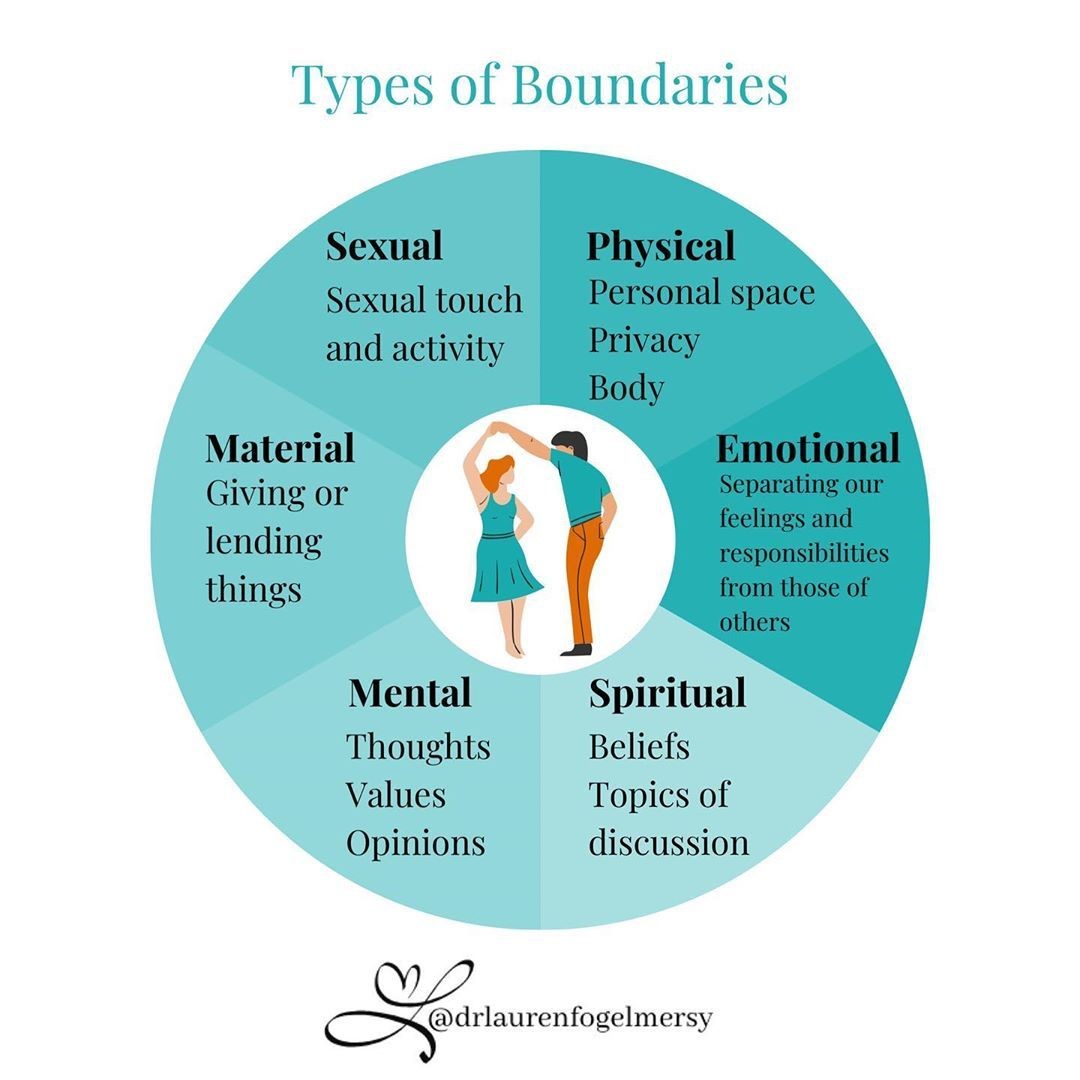
Boundaries
A limit or space between you and another person; a clear place where you begin and another ends.
The purpose of setting a healthy boundary is to take care of yourself.
Boundaies are important for
- Good mental health
- Good emotional health
- Influence others' behavior
- Developed autonomy
- Avoidance of burnout
- Developed identity
How to set boundaries
- Define: Identify desired boundary
- Communicate: Say what you need
- Stay simple: Don't overexplain
- Set consequences: Say what it's important
Warning signs and symptoms
- Talking about wanting to die or to kill oneself, feeling hopeless or having no purpose, feeling trapped or being in unbearable pain or being a burden to others.
- Acting anxious, agitated, or reckless.
- Sleeping too much or too little.
- Withdrawing or feeling isolated.
- Showing rage or talking about seeking revenge.
- Displaying extreme mood swings.
Start a conversation with someone you suspect is suicidal or is going through a mental health challenge
- Ask and listen: Asking the questions, “Are you thinking about suicide?” communicates that you’re open to speaking about suicide in a non-judgmental and supportive way.
- Keep them safe: Put time and distance between the person and their chosen method.
- Be there: Increasing connectedness to others and decreasing isolation.
- Help them connect: Create a safety net they can use in a time of crisis.
- Follow up: Show ongoing support.
- Call Student Health Services for support: 406-657-2153.
CALL 911 IF YOU BELIEVE THAT SOMEONE’S LIFE IS IN DANGER.
Suicide Resources
Montana Crisis Recovery Hotline: 1-877-503-0833
- Free and confidential counseling services from a trained counselor. Available M-F, 10 am-10 pm
Montana Crisis Text Line: Text "MT" to 741-741
Montana Suicide Prevention Lifeline: 800-273-8255
Montana Warm Line: 1-877-688-3377
- Available M-F, 8 am-9 pm


